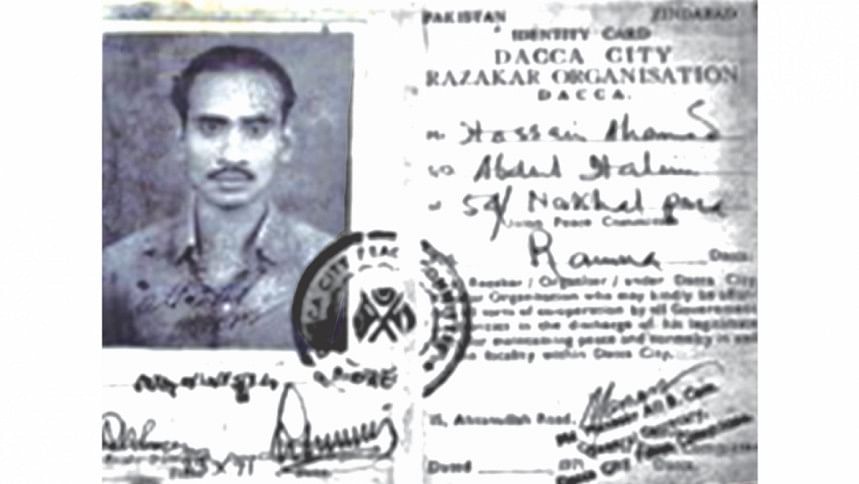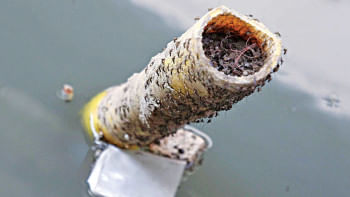Partners in the genocide

We have used Pakistani sources--books written by Pakistani military officers involved in the operations in East Pakistan in 1971 and the report of a chief justice of Pakistan--to compile these reports to show the extent and complicity of the Pakistan Government and its military in the genocide, destruction, and uprooting of tens of millions of Bangalis in 1971. The facts speak for themselves.
The Pakistan army was a hated name in Bangladesh. It had no public support. Every village actually sheltered freedom fighters waiting to ambush the invading enemy.
It dawned on the Pakistani rulers that without support from the locals it was impossible to continue its military campaign.
The Pakistan army would flinch at the slightest rustle of the leaves. Any sudden noise in the trees would make them jump out of their skin. The freedom fighters were training hard with weapons from India. They would make hit-and-run ambushes, making it difficult for the Pakistan army to venture deep into the villages.
Waging war against such a hostile people became a psychological war for the Pakistan army.
Brigadier General Siddik Salik, who had worked as the Pakistan army's public relations officer, reflected on the nervousness of the troops in his book "Witness to surrender".
"Let me describe here the march of one column from Dacca to Tangail on 1 April, which I accompanied," he wrote. "… Nothing was to escape their wrath. Behind infantry column was a battery of filed guns which fired a few shells at suitable intervals in the general direction of the move. The infantry column opened up on the slightest pretext or suspicion. A stir in a bunch of trees or a little rustle in the bari was enough to evoke a burst of automatic fire or at least a rifle shot. The searching troops passed through it, putting a match to the thatched huts and the adjoining bamboo plants. As soon as they advanced ahead, a bamboo stick burst with a crack because of the heat of the fire; everybody took it as a rifle shot by some hidden 'miscreants'. This caused their weight of the entire column to be riveted on the locality and all sorts of weapons fired in to the trees."
Pakistan's only mentionable political friend in then East Pakistan was Jamaat-e-Islami, which vowed to lend all-out support for the unity of Pakistan. But Jamaat was a despicable organisation despised by the people.
So, Pakistan needed a local armed force which would guide it through the unknown terrain and fight a proxy war. It is then that Pakistan thought of raising an auxiliary force called the Rajakars, which ultimately played a vital role in the killings, lootings and raping of the Bangalis.
It is therefore a must to revisit the roles that Rajakars played. They acted on behalf of and at the instruction of the Pakistan army to commit these crimes against humanity.
And it is these Rajakar leaders and other collaborators that Bangladesh is holding trials of and it is these same people that Pakistan is showing anguish and grief for.
In fact, General Amir Abdullah Khan Niazi dedicated his book "The betrayal of East Pakistan", among others, to these Razakars who he thought had fought valiantly for Pakisan.
He wrote: "Although their recruitment had started earlier, sanction for the raising of this force was given at the end of August 1971. A separate Razakar Directorate was established, and the whole set-up started taking proper shape. Two separate wings called -- Al-Badr and Al-Shams were organised."
He further described that the two wings had separate functions -- Al-Badr was for "specialized operations" of which Jamaat leader Matiur Rahman Nizami was the chief and the just-hanged war criminal Mojaheed second-in-command while "Al-Shams … was responsible for the protection of bridge, vital points and other areas."
Niazi, the man who led the Pakistan army in Bangladesh, described that the Razakars were mostly employed in areas where army elements were around to control and utilise them. "Seventy percent of the target ceiling of 50,000 Razakars, spread over all the districts of the province, was achieved. Battle schools were established to train Razakar platoon and company commanders," he wrote.
The regular army felt comfortable to take Razakar platoons along during operations.
"The border outposts were mainly to be manned by the Mijahidis, Razakars, Scouts and Rangers, who were also to protect the lines of communications," Niazi wrote. "They did an admirable job."
Siddiq Salik, too, wrote about the necessity of the Razakars. He said the Pakistan army during their operations had "indulged in looting, killing and rape".
"These atrocities naturally alienated the Bengali population. They were not very fond of us before, but now they hated us bitterly. Hence, there was no question of mass cooperation by the Bengalis. Only those people joined hands with us who, in the name of Islam and Pakistan, were prepared to risk everything," he wrote.
These "patriotic elements" were organised into two groups. The elderly and prominent among them formed Peace Committees while the young and able-bodied were recruited as Razakars.
"The committees were formed in Dacca as well as in the rural areas and they served as a useful link between the Army and the local people," Salik maintained.
"Razakars were raised to augment the strength of the West Pakistani troops and to give a sense of participation to the local population," he wrote.
What kind of "participation" these Rajakars and Al-Badr men did is known to the world now. Al-Badr, as part of Tikka Khan's scorched earth policy, drew up a list of intellectuals and picked them up in the middle of December when it was evident that Pakistan was going to lose the war.
The best minds of the soil -- writers, teachers, editors and intellectuals --were taken to Rayer Bazar and Mirpur where they were shot and bayoneted to death on December 14. Their bodies were discovered later, though the whereabouts of many still remain unknown.
Al-Badr chief Nizami, now awaiting death sentence, has been charged with the killings of intellectuals, murders of 450 civilians and rape in Bausgari and Demra, killings of 52 people in Dhulaura, killings of 10 people and rape of three women in Karamja in Pabna. He's been awarded death sentence in all these charges.
He was also sentenced to life imprisonment on charges of involvement in the killing of Kasim Uddin and two others, and Sohrab Ali in Pabna, and torture and killing at Mohammadpur Physical Training Centre in Dhaka.
Mojaheed was hanged for leading the killings of intellectuals and other atrocities.
Salik also mentioned the other important collaborators who aided the genocide campaign.
"The Bengalis, by and large, still cherished the hope of Mujib's return and assumed an attitude of passive indifference. The only people who came forward were the rightists like Khaja Khairuddin of the Council Muslim League, Fazlul Quader Chowdhury of the Convention of Muslim League, Khan Sobour A. Khan of the Qayyum Muslim League, Professor Ghulam Azam of the Jamaat-e- Islami and Maulvi Farid Ahmed of the Nizam-e-Islam Party," he wrote.
Fazlul Quader Chowdhury is the father of Salauddin Quader Chowdhury who was recently hanged for his war crimes.
Bangladesh would not forget the brutalities these collaborators had perpetrated for their masters, the Pakistan army and the Pakistani rulers.

 For all latest news, follow The Daily Star's Google News channel.
For all latest news, follow The Daily Star's Google News channel. 



Comments